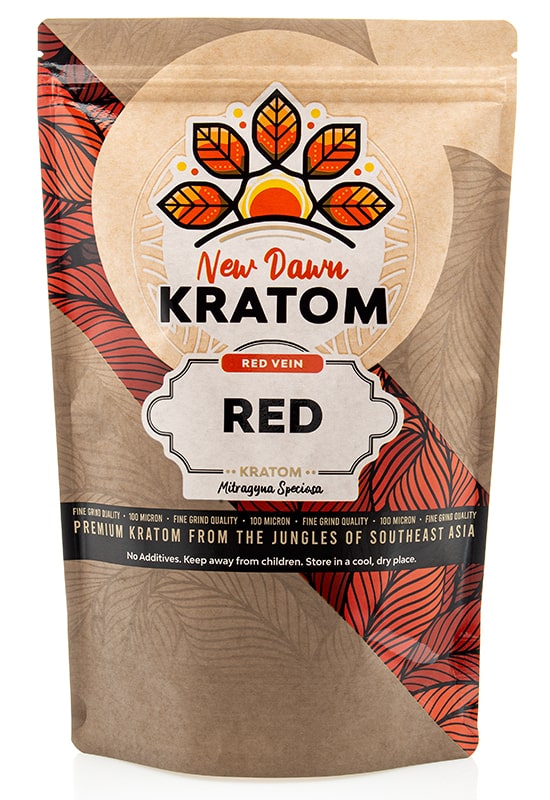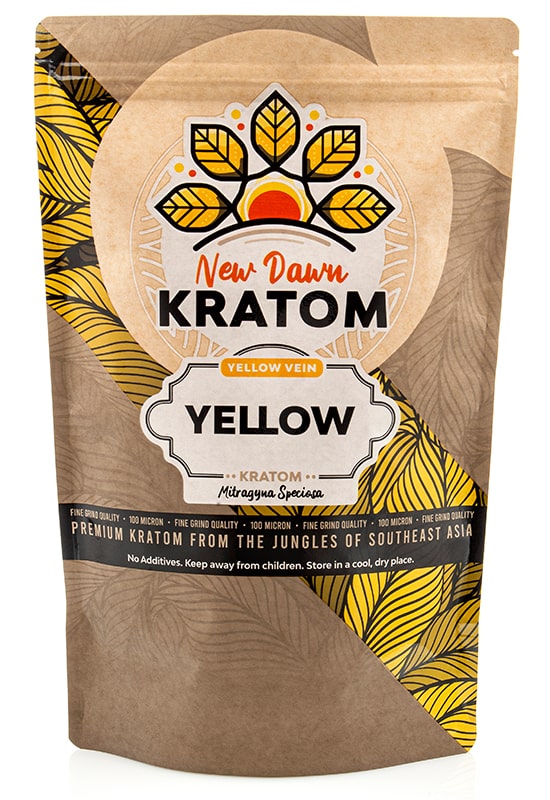In the dynamic world of bodybuilding, new approaches for enhancing performance are constantly being explored. One such frontier is the leaf of the kratom tree, a traditional Southeast Asian plant making waves in fitness circles around the globe.
As bodybuilders hunt for the edge that will push their strength, endurance, and recovery to the next level, kratom has emerged as a promising contender. Let’s plunge into the depths of this botanical phenomenon to decipher its potential impact on bodybuilding and understand how kratom and bodybuilding can go hand in hand.

What Is Kratom?
Kratom, scientifically known as Mitragyna speciosa, is a tropical evergreen tree native to Southeast Asia, particularly in Thailand, Malaysia, and Indonesia. It’s been a part of traditional medicine in these regions for centuries, used for its stimulant and discomfort-relieving effects. The leaves of the kratom tree contain active compounds called alkaloids, the most notable of which are mitragynine and 7-hydroxy mitragynine.
These compounds interact with receptors in the brain, leading to effects that can range from increased energy and alertness at lower doses to sedation and relief at higher doses. It’s these unique effects that have piqued the interest of the bodybuilding community and driven a surge in research into the potential benefits and risks of kratom use.
Kratom and Bodybuilding: How this Herb Can Help
The primary benefits of kratom in bodybuilding and communities of fitness enthusiasts include the following:
Boosts Energy
In smaller doses, kratom is said to increase energy levels. This effect is likened to the stimulation from a strong cup of coffee. For workouts, these energy-boosting effects could enhance focus and concentration, potentially leading to a more effective exercise session.
Just like the caffeine content in different beans of the coffee family, the mitragynine content in different strains of kratom can vary. This variation means that some strains might provide a more potent burst of energy compared to others. The three main kratom strains are generally classified by their vein colors: red, white, and green, each having different effects and potency.
White vein kratom is typically associated with more stimulating effects and may be the most beneficial for those looking for a workout supplement that can increase their energy during exercise.
Works Like Powerful Pre-Workout Supplements
Stimulation of blood circulation is one of the potential benefits attributed to kratom use. This could have relevance when kratom powder or kratom tea is used as a workout supplement, as improved circulation enhances athletic performance.
During a workout, muscles require more blood and oxygen than during rest periods. This is because exercise increases the demand for energy, which is produced by the metabolism of oxygen and nutrients carried to the muscles by the blood. When bodybuilding, kratom can enhance blood flow and theoretically meet this increased demand, allowing muscles to work harder and longer.
Increased blood flow can also help remove waste products, such as lactic acid and carbon dioxide, produced by muscles during intense workouts. This reduces muscle fatigue and enhances recovery after workouts.
Improves Focus
White vein kratom strains are often associated with increased energy, focus, and motivation. These effects are linked to the strain’s higher concentrations of mitragynine, a compound that interacts with receptors in the brain in a way that can stimulate certain brain regions involved in focus and motivation.
Similarly, green kratom strains are reported to provide balanced effects, offering a combination of the energy and focus associated with white strains and the soothing effects associated with red strains. This could make green strains particularly suitable for maintaining focus and confidence during workouts without causing overstimulation.
The ability of kratom to improve focus and motivation can be beneficial for workout sessions in several ways:
- Proper technique: Sharper focus could help you maintain proper form and technique during workouts, maximizing the effectiveness of each movement and reducing the risk of injury.
- Improved motivation: Workouts, particularly high-intensity ones, can be mentally challenging. An increase in motivation might help you push through difficult parts of a workout, leading to greater muscle growth over time.
- Increased confidence: The potential mood-enhancing properties of kratom might increase your confidence during strenuous workouts, allowing you to take on challenging exercises with less hesitation.

Controls Appetite
A “cutting cycle” is a term used in bodybuilding and fitness communities to describe a period where the primary goal is to lose fat while maintaining as much muscle mass as possible. It typically involves a combination of diet, exercise, and even supplements. One key aspect of a successful cutting cycle is a caloric deficit — consuming fewer calories than you burn.
Kratom has been anecdotally reported to help control and suppress appetite. This effect could be related to its active compounds and their interaction with receptors in the brain, which are known to play a role in regulating hunger. If kratom does help to suppress appetite, this could make it easier for individuals to maintain a caloric deficit during a cutting cycle. Eating less can reduce caloric intake, thus promoting fat loss.
Soothes Muscles
Kratom might help to relieve muscle and aid in muscle recovery. This could be particularly beneficial after intense workouts, where muscle inflammation is common. This typically sets in a day or two after a tough workout and can be a major impediment to subsequent workouts.
In addition to its potential discomfort-relieving effects, some anecdotal evidence suggests that kratom may also possess anti-inflammatory properties. Inflammation is a natural part of the body’s response to injury, including the microtears in muscle tissue caused by intense exercise. However, excessive inflammation can impede recovery and lead to prolonged discomfort. If kratom helps to reduce inflammation, this could further aid in post-workout recovery.
Enhances Mood
Many individuals turn to kratom as a natural alternative to traditional mood enhancers. If you struggle with staying motivated to hit the gym, kratom’s mood-elevating qualities may be just what you need to power through your workouts. Kratom can provide a subtle but noticeable lift in energy and mood, enabling you to push yourself to complete your training sessions even when you feel like you’re fighting an uphill battle. Keep in mind that, like any supplement, kratom should be taken in moderation and under the guidance of a healthcare professional.
These benefits are primarily anecdotal and may vary greatly from person to person. More research is needed to fully understand how to best use kratom for bodybuilding.

Useful Tips to Remember When Combining Kratom and Bodybuilding
If you’re considering taking kratom for workouts, here are a few tips:
- Choose the Right Strain: Different strains of kratom are associated with different effects. For instance, white strains are known for their energizing and focus-enhancing effects, proving useful for workouts. Red strains are often used for their relaxing and relieving properties, which are potentially beneficial for post-workout recovery.
- Start With Low Doses: When new to using kratom, start with a lower dose to assess your body’s response. A typical low dose might be around 1 to 2 grams. If you don’t experience adverse effects, you can gradually increase the dose over time.
- Timing Is Important: Kratom effects typically begin 10 to 15 minutes after ingestion and last about two hours. Therefore, it’s a good idea to time your dosage so the effects coincide with your workout.
- Stay Hydrated: Kratom can cause dehydration, especially in larger doses. This effect and loss of fluids during workouts can significantly increase your risk of dehydration. Ensure you’re drinking plenty of water before, during, and after your workout.
- Combine It With a Healthy Lifestyle: Kratom isn’t a magic bullet for fitness. A balanced diet, regular exercise, and adequate sleep are all crucial components of a successful fitness plan.
- Ensure the Quality of Kratom: Purchase kratom from a reputable source to ensure it’s pure and not mixed with other potentially harmful substances.
Side Effects of Kratom
Here are a few side effects that could prove particularly problematic for those who combine kratom and bodybuilding:
Dehydration
Dehydration is a significant concern for bodybuilders who already lose a lot of fluids during intense workouts. Dehydration can hamper performance, delay recovery, and even lead to dangerous health complications.
Sleep Issues
Some strains of kratom can cause restlessness, particularly when taken in the evening. Good quality sleep is vital for the recovery and growth of muscles, so this could negatively impact progress in bodybuilding.
Increased Heart Rate and Blood Pressure
Kratom can increase heart rate and blood pressure, which could be dangerous during intense exercise. This side effect should be particularly concerning for those with pre-existing cardiovascular conditions.
Appetite Suppression
While some bodybuilders might use kratom to control their appetite during cutting cycles, long-term appetite suppression can lead to inadequate nutrient intake. This could hinder muscle growth and recovery, resulting in nutrient deficiencies.

Frequently Asked Questions
How can kratom help with bodybuilding?
Anecdotally, kratom is reported to provide energy and focus for workouts, relieve post-workout inflammation, and suppress appetite. However, the scientific evidence backing these claims is limited.
Which kratom strain is best for bodybuilding?
The choice of strain depends on the desired effects of kratom users. White strains are typically associated with increased energy and focus, which is potentially beneficial for workouts. Red strains are known for their relieving properties, which may aid in post-workout recovery.
Conclusion
The potential of kratom in bodybuilding is a field of exploration that carries a blend of potential benefits and significant considerations. Potential benefits must always be balanced against the known risks, which range from dehydration and increased heart rate to more serious concerns like dependency. Therefore, it’s essential to consult a healthcare professional before incorporating kratom or any new supplement into a fitness regimen.





